Nationality French Occupation Shepherd and soldier | Name Augustin Trebuchon | |
 | ||
Born 30 May 1878 Montchabrier, France Died 11 November 1918(1918-11-11) (aged 40)Vrigne-Meuse, Ardenne, France | ||
Augustin-Joseph Victorin Trébuchon (30 May 1878 – 11 November 1918) was the last French soldier killed during World War I. He was shot 15 minutes before the Armistice came into effect, at 10.45am on 11 November 1918. The French Army, embarrassed to have sent men into battle after the armistice with the Germans had been signed, recorded the date of his death as earlier by one day.
Contents

Augustin tr buchon pourquoi lui athus vus
Background

Augustin Trébuchon was born at Montchabrier (near Le Malzieu-Ville in the Lozère) on 30 May 1878, with four younger brothers and sisters. His mother died when he was young and his father nine years later. He had been in the army since the war began in 1914. He was a communal shepherd and played accordion at village marriages before volunteering for the army on 4 August 1914. He joined the 415th Infantry Regiment as a messenger. He had already served in the second battle of the Marne and at Verdun, Artois and the Somme before arriving in the Ardennes at the end of the war. He had twice been wounded, including a severe wound to his left arm caused by an exploding artillery shell. Upon his promotion to the rank of Soldat de Première Classe (Private First Class) in September 1918 it was said that he was "a good soldier having always achieved his duty, of remarkable calm, setting the best example to his young comrades."
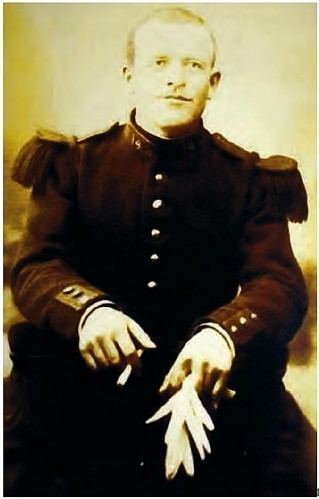
Trébuchon, as a messenger, knew an agreement had been signed before the rest of his unit. At Vrigne-sur-Meuse, in the Ardennes, the 163rd Infantry Division was ordered to attack an élite German unit, the Hannetons. General Henri Gouraud told his men to cross the Meuse and to attack "as fast as possible, by whatever means and regardless of cost". It has been speculated that the attack was to end any possible hesitations by German negotiators at Compiègne, that Maréchal Foch believed the Germans were reluctant to sign and so ordered Général Philippe Pétain to press on across the Meuse.
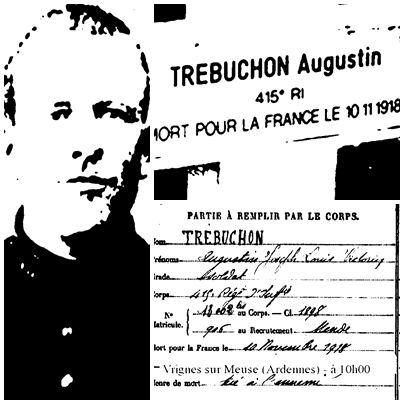
Trébuchon was halfway between Sedan and Charleville-Mézières. Rain was falling and the Meuse was flooding. Its width was put at 70m. The temperature was well below freezing. Warfare had destroyed bridges across the river and sappers worked by night and in fog to build a plank footbridge across a lock. There had been no reconnaissance of the other bank because bad weather had kept the spotter plane on the ground. Around 700 men crossed the river a little after 8am, taking a telephone wire with them. Some fell in the river and the first deaths were by drowning.
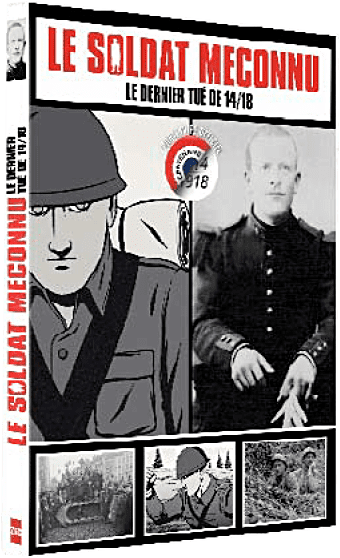
The fog cleared at 10.30am and the French could see the Germans installed a little higher than them, a few hundred metres away. The French were spread over three kilometres between the Meuse and a railway line. The Germans opened fire with machine guns. The French sent up a spotter plane now that the fog had lifted and the artillery on the other bank could open fire without fear of killing their own side. Darkness fell again at 6pm and the battle continued until news of the armistice arrived.
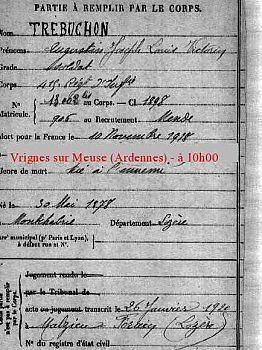
The last of the 91 French soldiers to die was Trébuchon, "with a red hole in his right side", probably a figure of speech as this expression comes from Arthur Rimbaud's very famous poem "Le Dormeur du Val" (The Sleeper in the Valley). He was 40. He fell near the railway line with his message still in his hand. It read "Rassemblement à 11h 30 pour le ravitaillement - "Muster at 11.30 for food." The armistice followed and the French withdrew without honouring their dead.
Memorial and burial
Trébuchon is buried in grave 13 at the cemetery at Vrigne-Meuse.
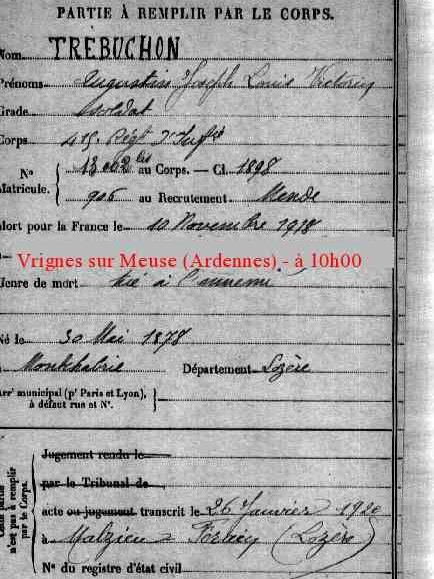
Trébuchon remained unrecognised until a retired breeder, René Fuselier, began inquiring in 1998 into the identity of the last poilu to die. He said: "With the computer facilities that we have today, it was easy to find out about him and others of the past."
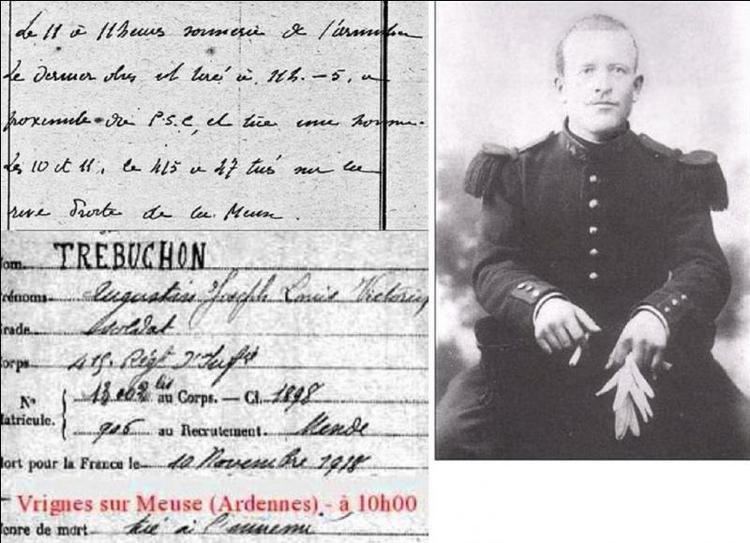
The date on his memorial at Malzieu-Forain and in the village records is 10 November 1918. The Germans had asked for an armistice on 9 November and it came into effect on 11 November. Nobody knows who ordered the death date to be changed, but it is said to be so for all French soldiers who died on 11 November. Speculation that the army was ashamed of sending men into battle knowing the armistice had already been agreed grew when the 115th Infantry Regiment was not invited to the victory parade through Paris on 14 July 1919.
Trébuchon is named on the village memorial as Victorin—his second given name—rather than Augustin.
A street at Vrigne-Meuse, where he died and where he is buried with 17 colleagues in the cemetery, has been named after him.
